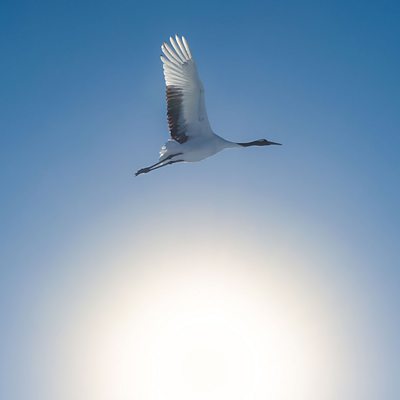Episode details

Available for over a year
Earlier this morning India launched a rocket to deliver a satellite to join a constellation of seven satellites which will take high-resolution full colour video of the earth from space. Which means that it wonтt be long before we get to see some remarkable film of the tiny globe on which we live. I well remember staring at the first photographs of the earth taken from the moon. I was a child and hadnтt fully registered the fact that human beings had never before been able to look at the whole globe from a distance and see it against the backdrop of the universe. The initial pictures were stunning and had a long-lasting impact on those who saw them. Having seen ourselves as the centre of the universe and had our perspectives shaped by the intimate dramas of our particular habitat, it came as a shock to see the beautiful, tiny, fragile orb spinning almost insignificantly in the vast ocean of star-studded blackness. Are we really that small? Well, the sense of mystery that these photographs evoked was not unique. Nearly three millennia ago a peasant looked up at a Middle Eastern sky and wrote: тWhen I look at your heavens, the work of your fingers, the moon and the stars that you have established; what are human beings that you are mindful of them, mortals that you care for them?т OK, the poet wasnтt looking back on earth, but from earth looking up т and this had the effect of causing him to wonder what life is all about and why we matter anyway. And it is this perspective that puts in context both the global and local struggles that consume human energy, aspiration and fear т from the future of the NHS to North Korean nuclear missiles and a post-Brexit UK. Science explores the shape and mechanics of the universe, sparking the imagination and causing us to face reality based on observable facts. What science canтt do, however, is attribute to what is seen any inherent meaning, however inspiring the observation itself might be. What is seen has to be mediated, interpreted or apprehended, but it cannot of itself impute particular meaning other than to say that it is what it is. But, this is where science and faith can be seen to play on the same field. The old so-called тconflict metaphorт т in my view т needs to be consigned to the intellectual bin. George Lemaitre was a Belgian priest and professor of physics in the last century. It was he who proposed the theory of the expansion of the universe in what became known as Hubbleтs Law. Praised by Albert Einstein in 1933, Lemaitre went on to say: тThere are two paths to truth; and I decided to follow both of them.т So, science and faith are not enemies in the search for truth. Or, as Shakespeare put it in Hamlet тThere are more things in heaven and earth, Horatio, than are dreamt of in your philosophy.т
Programme Website